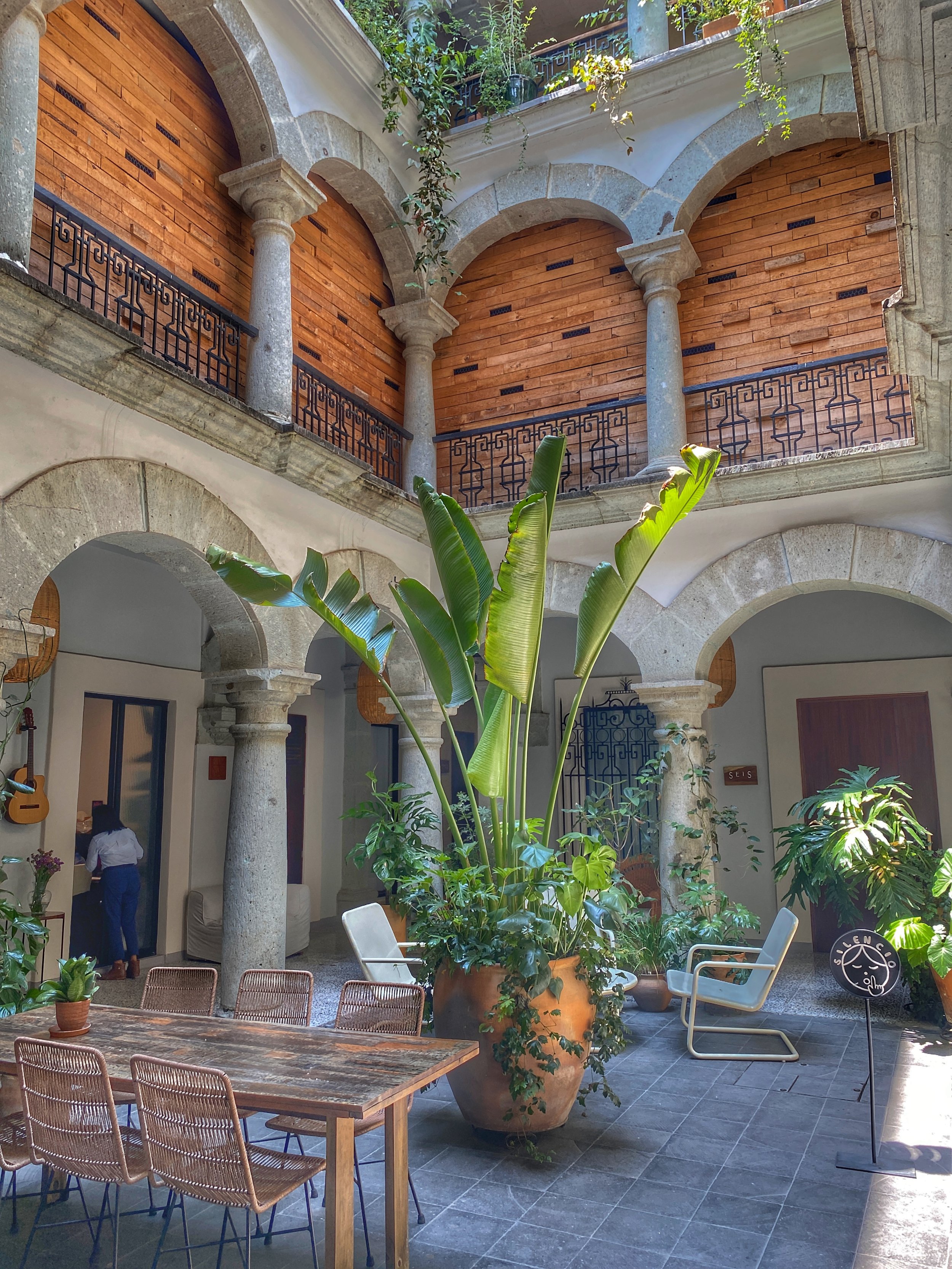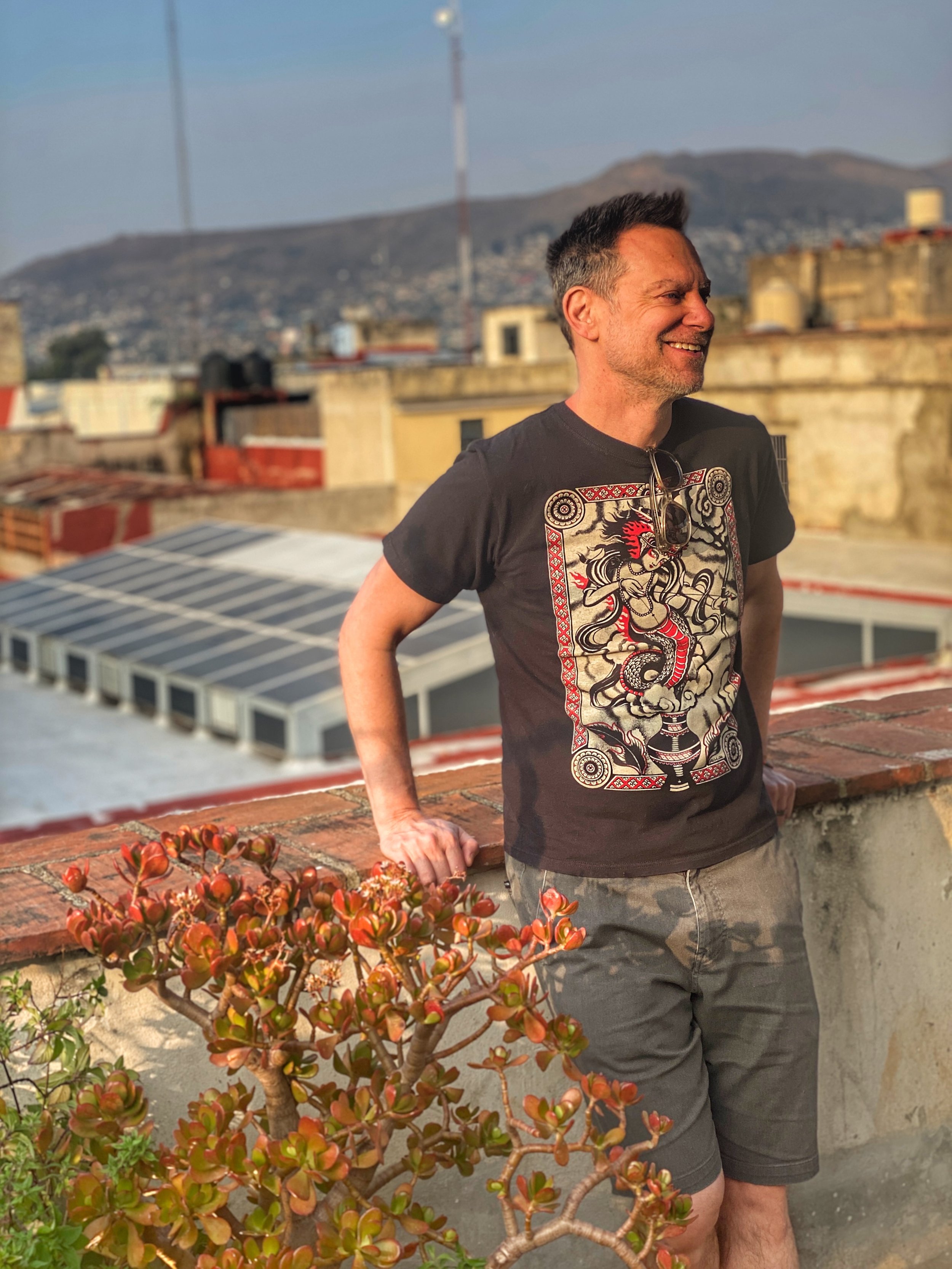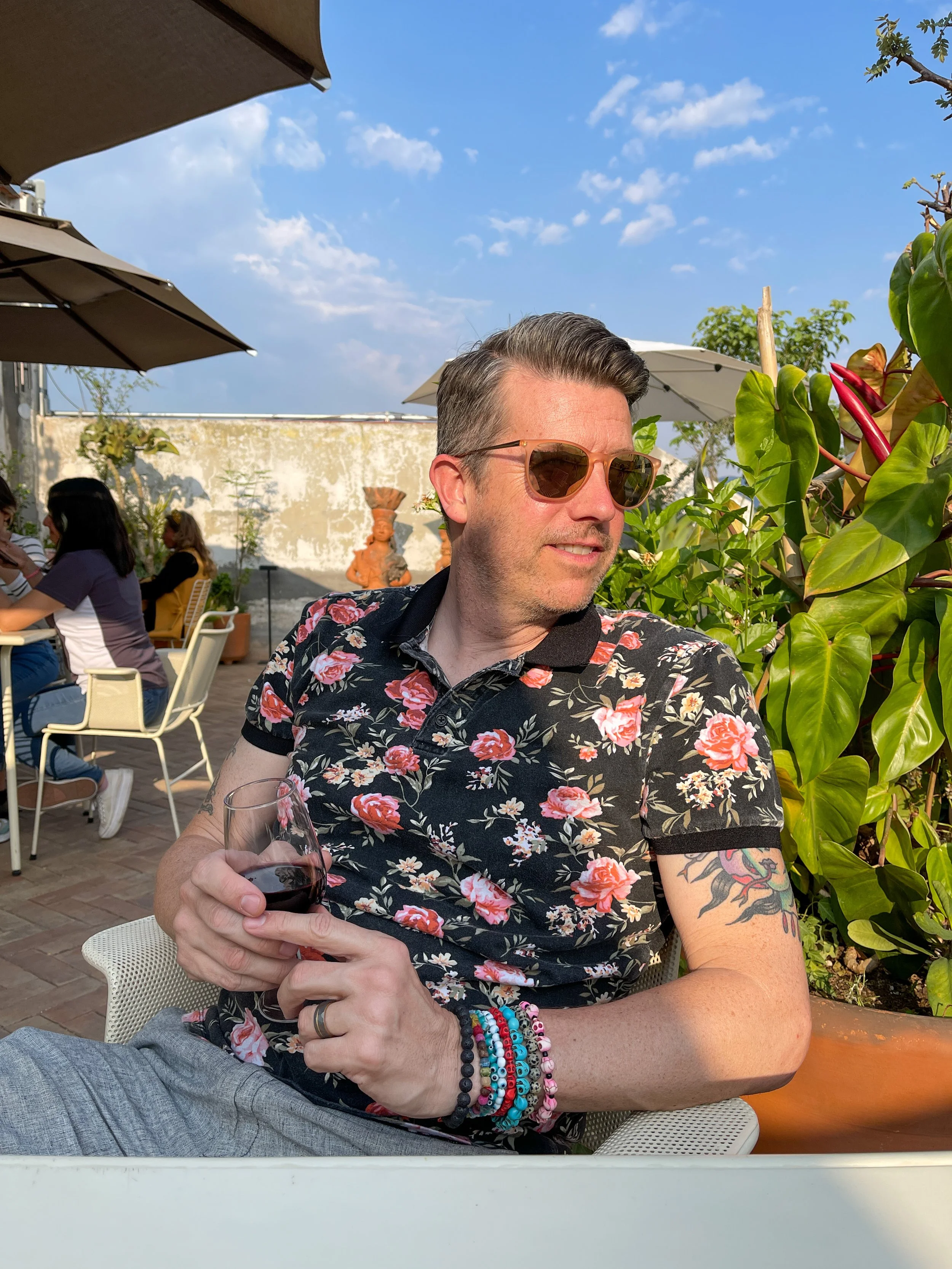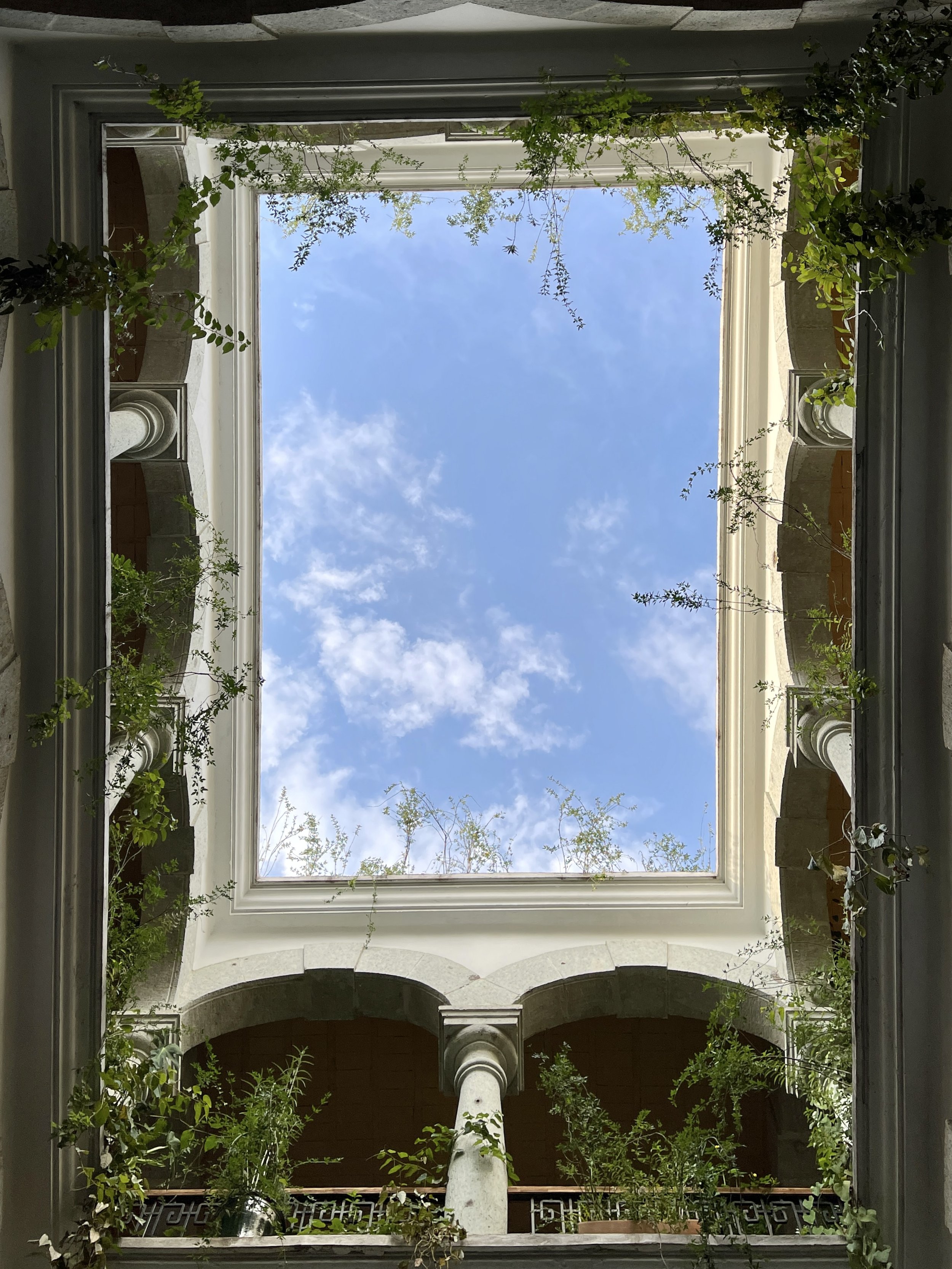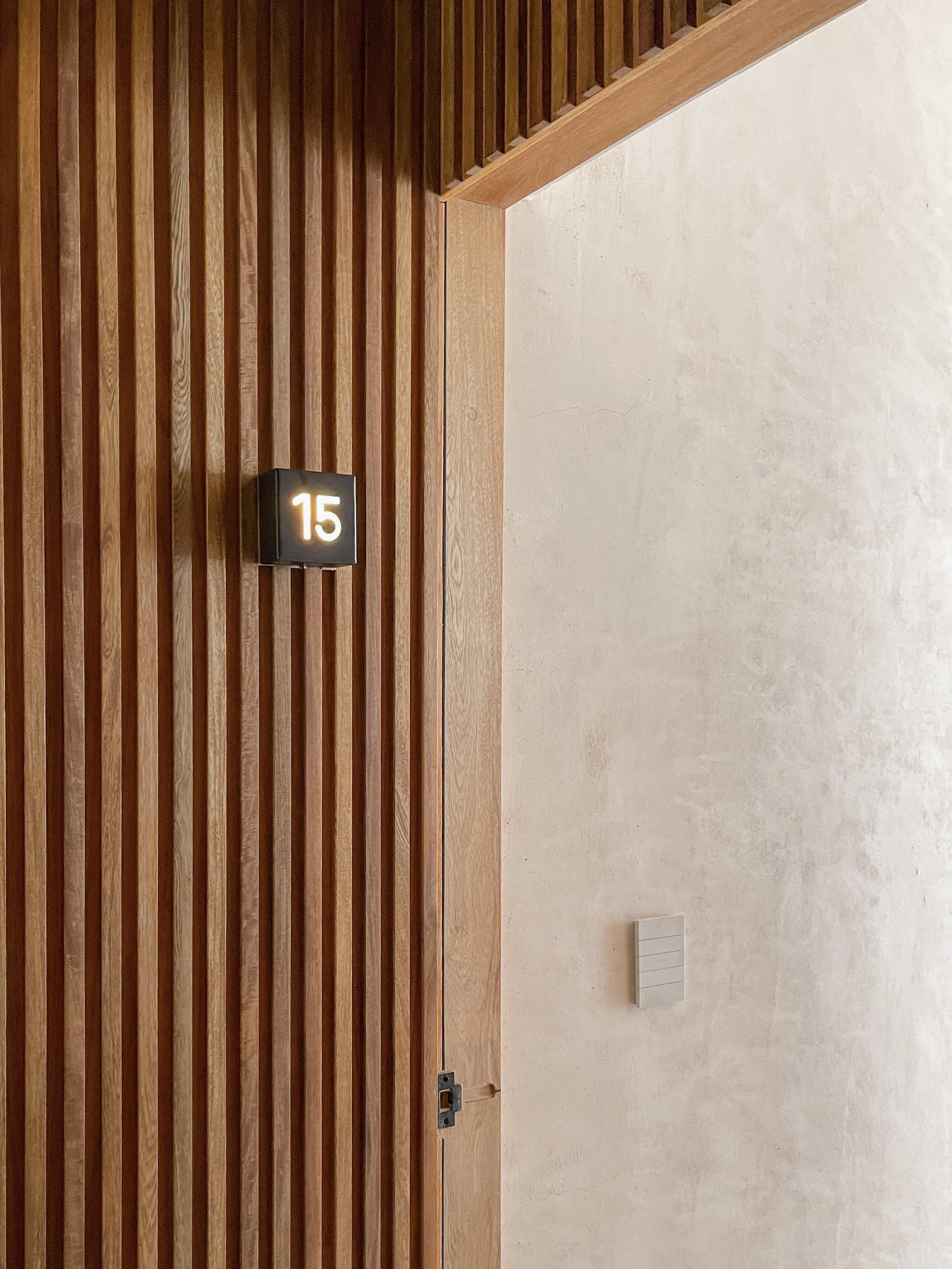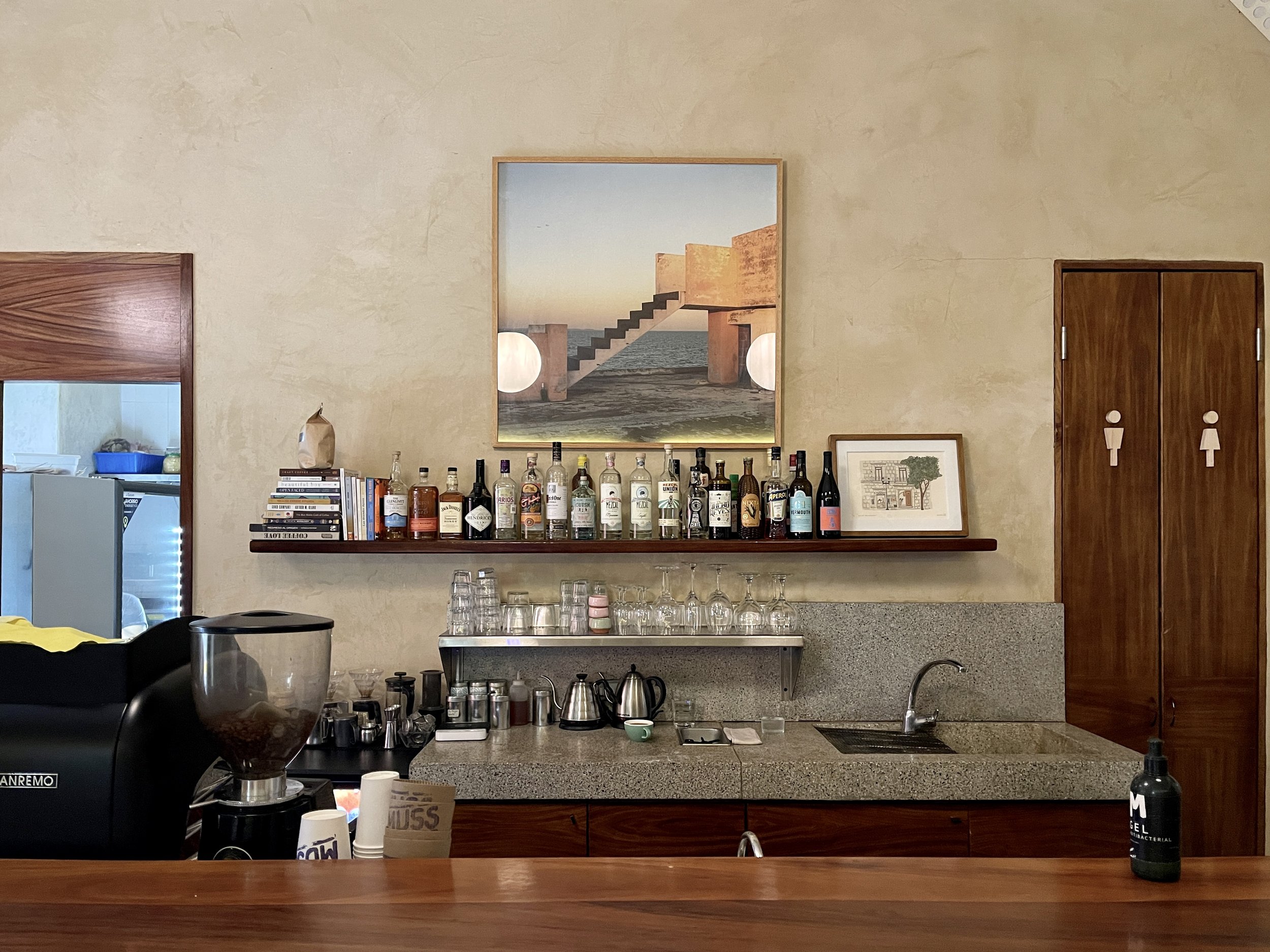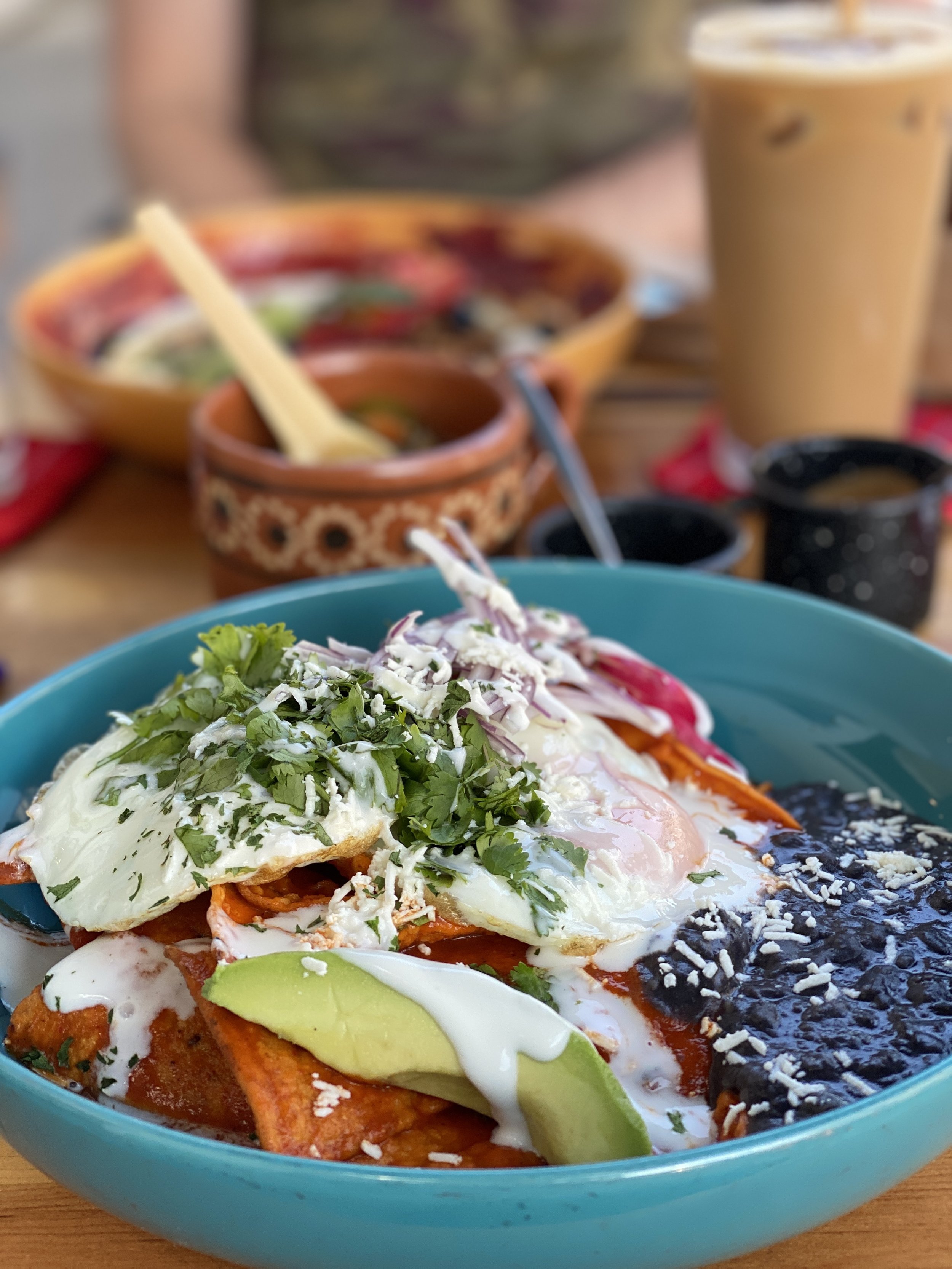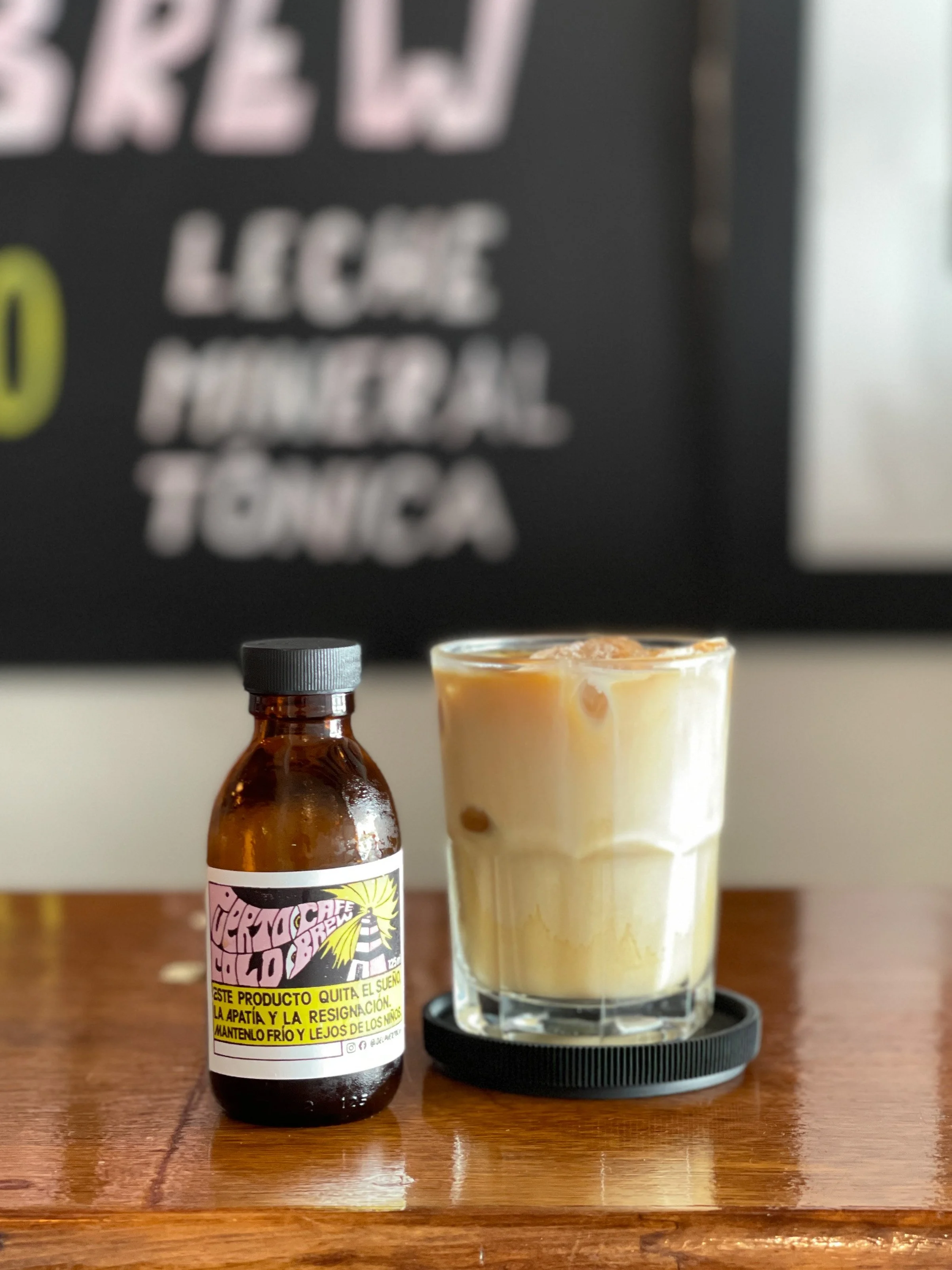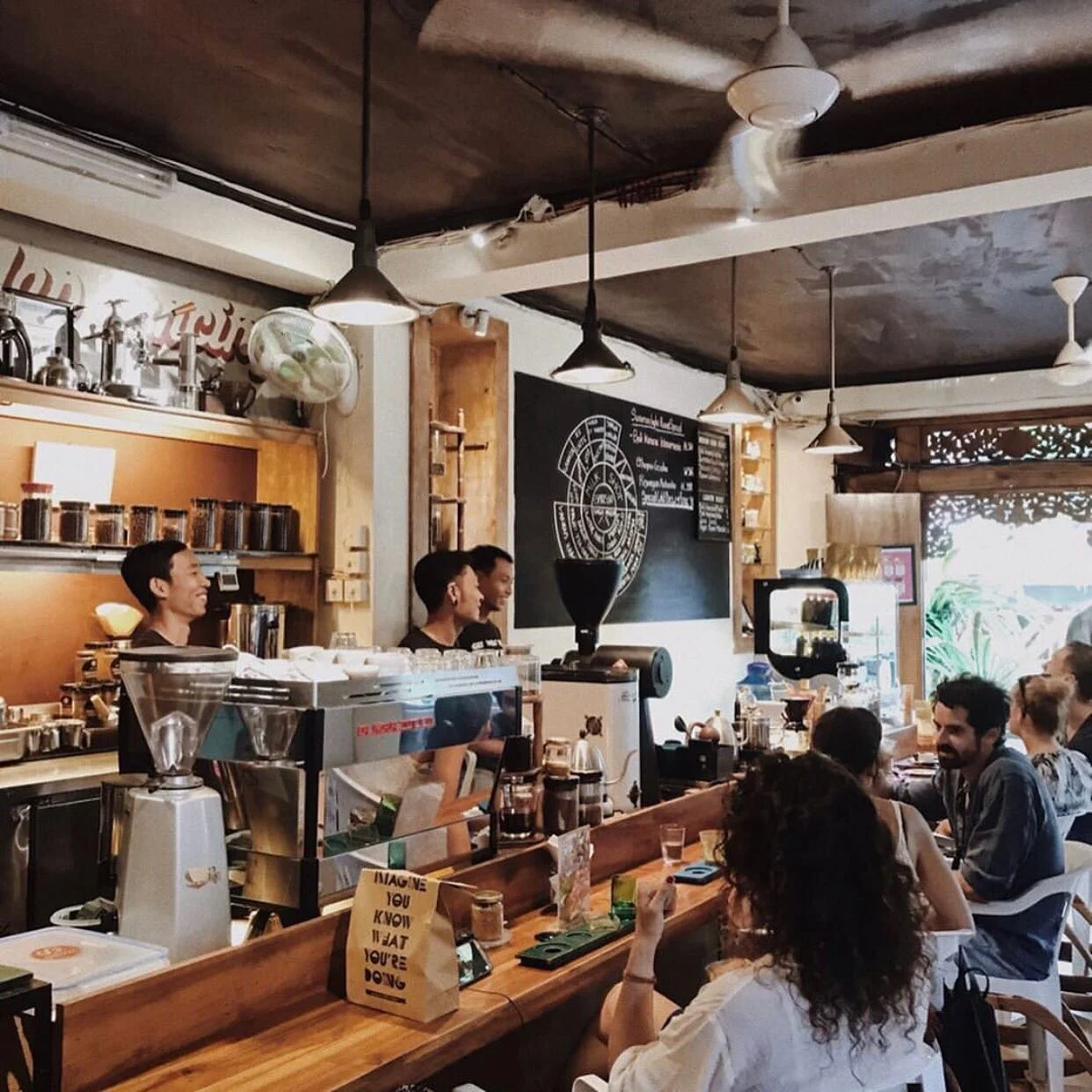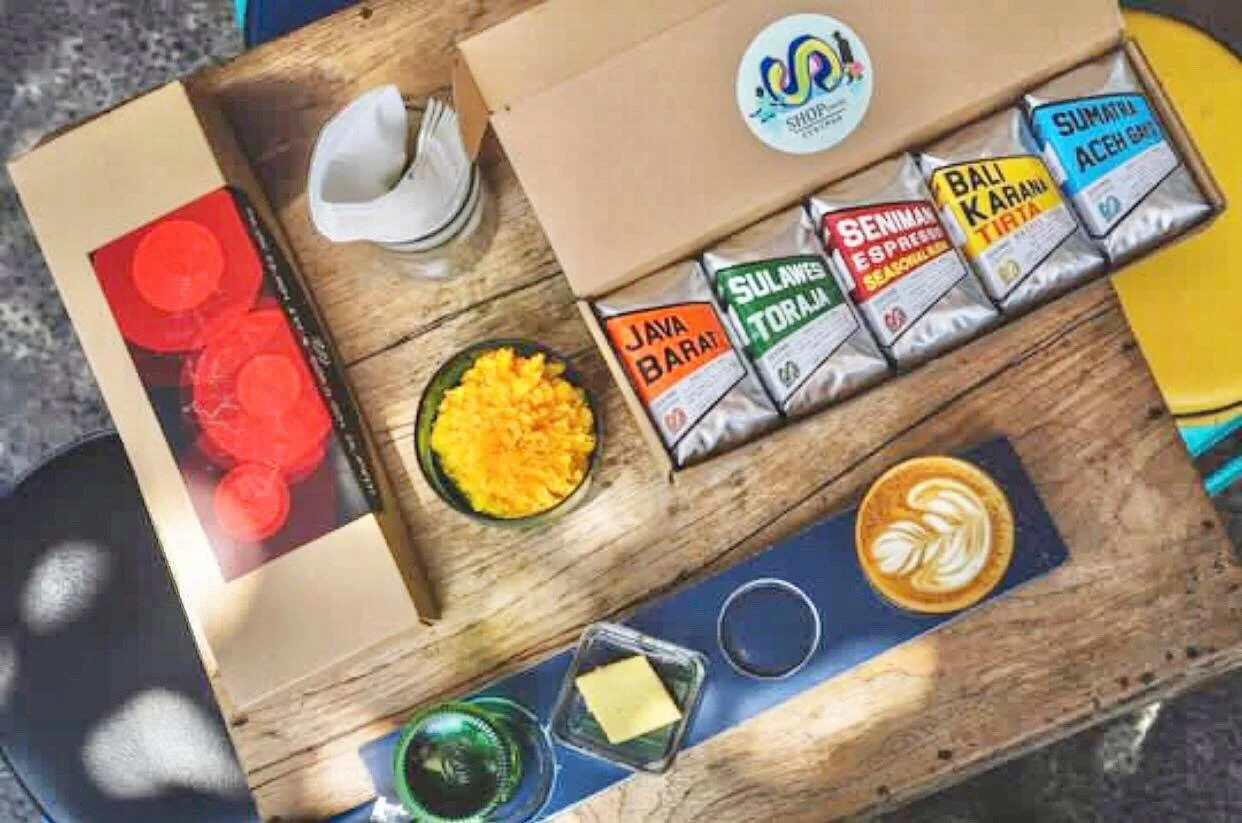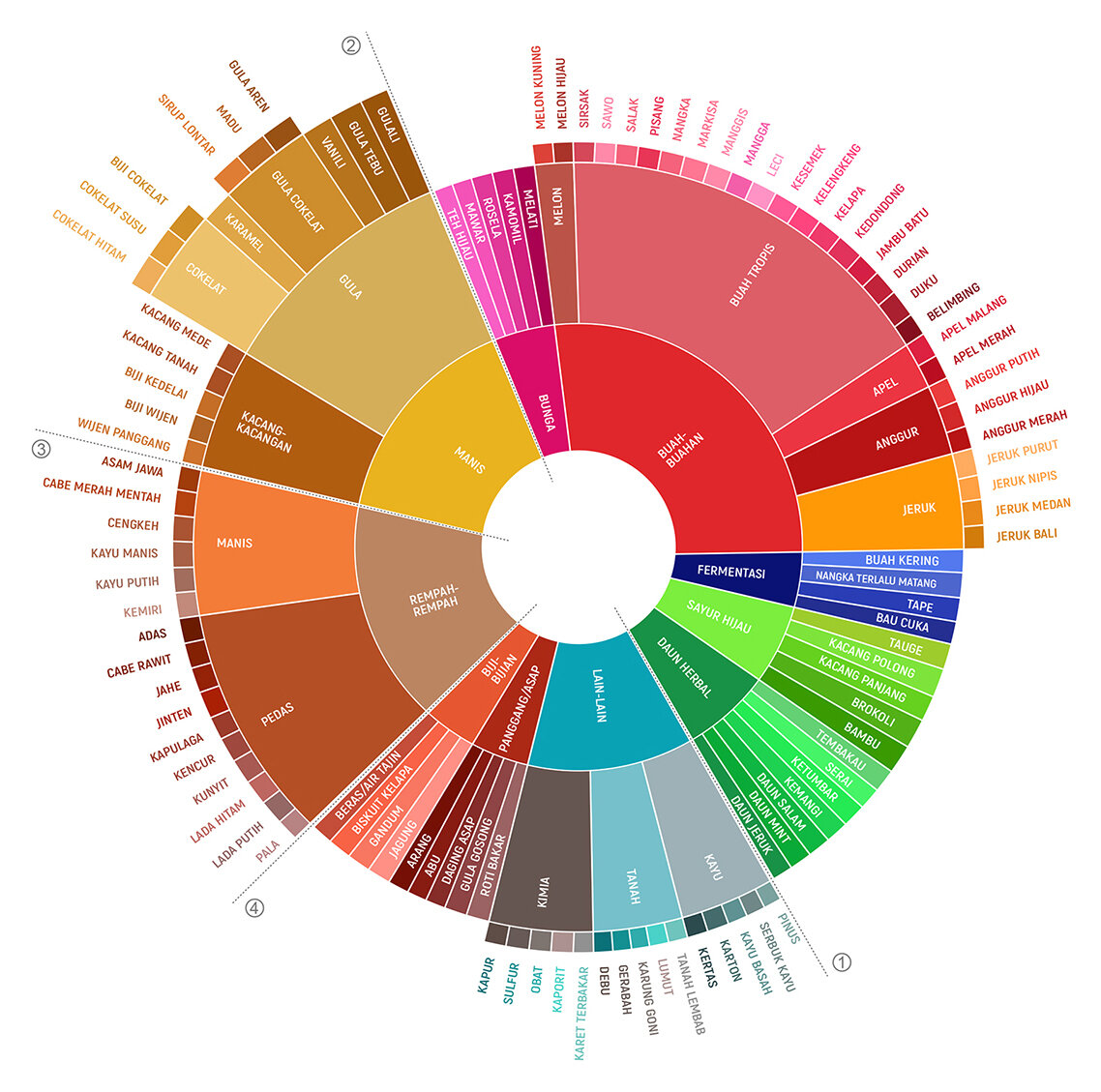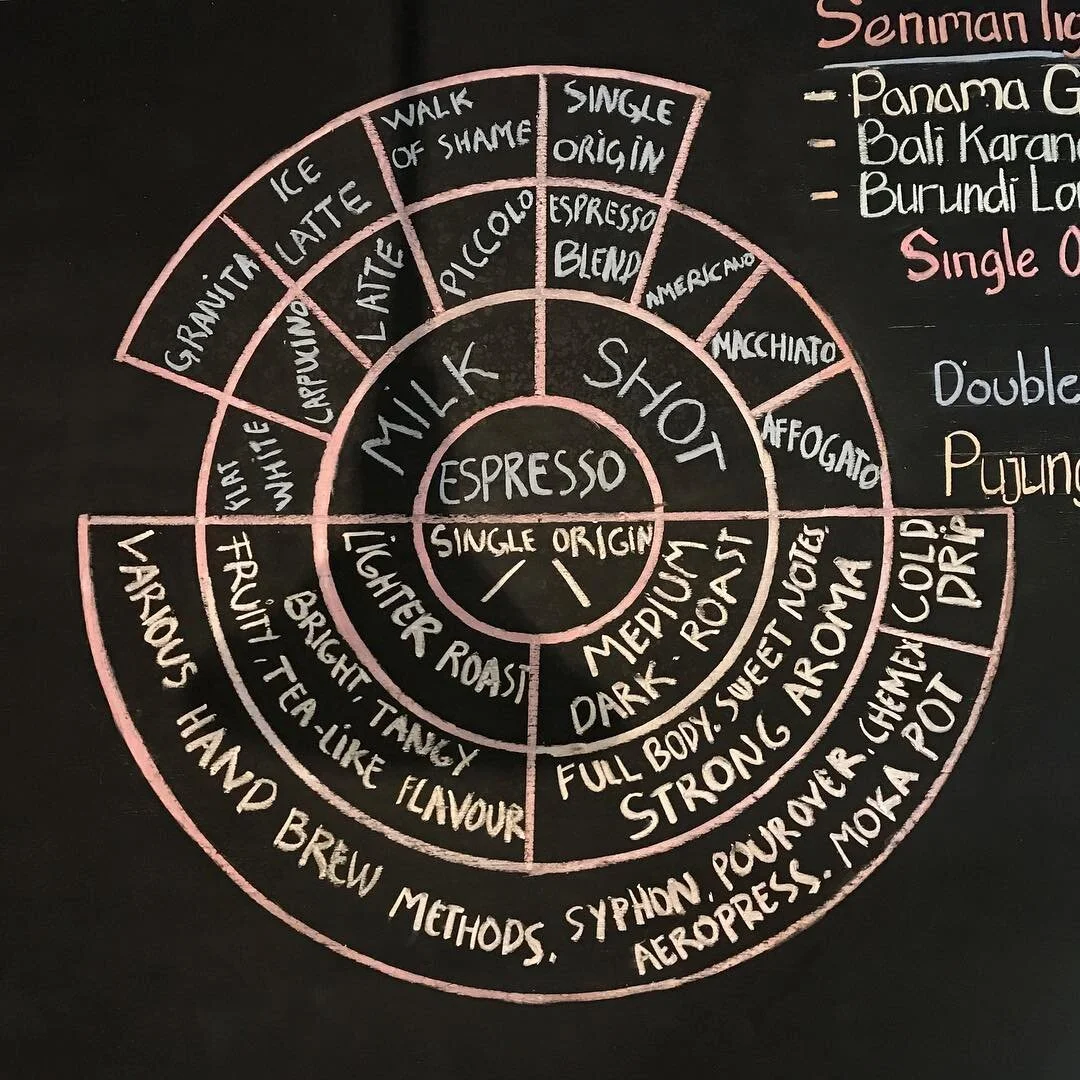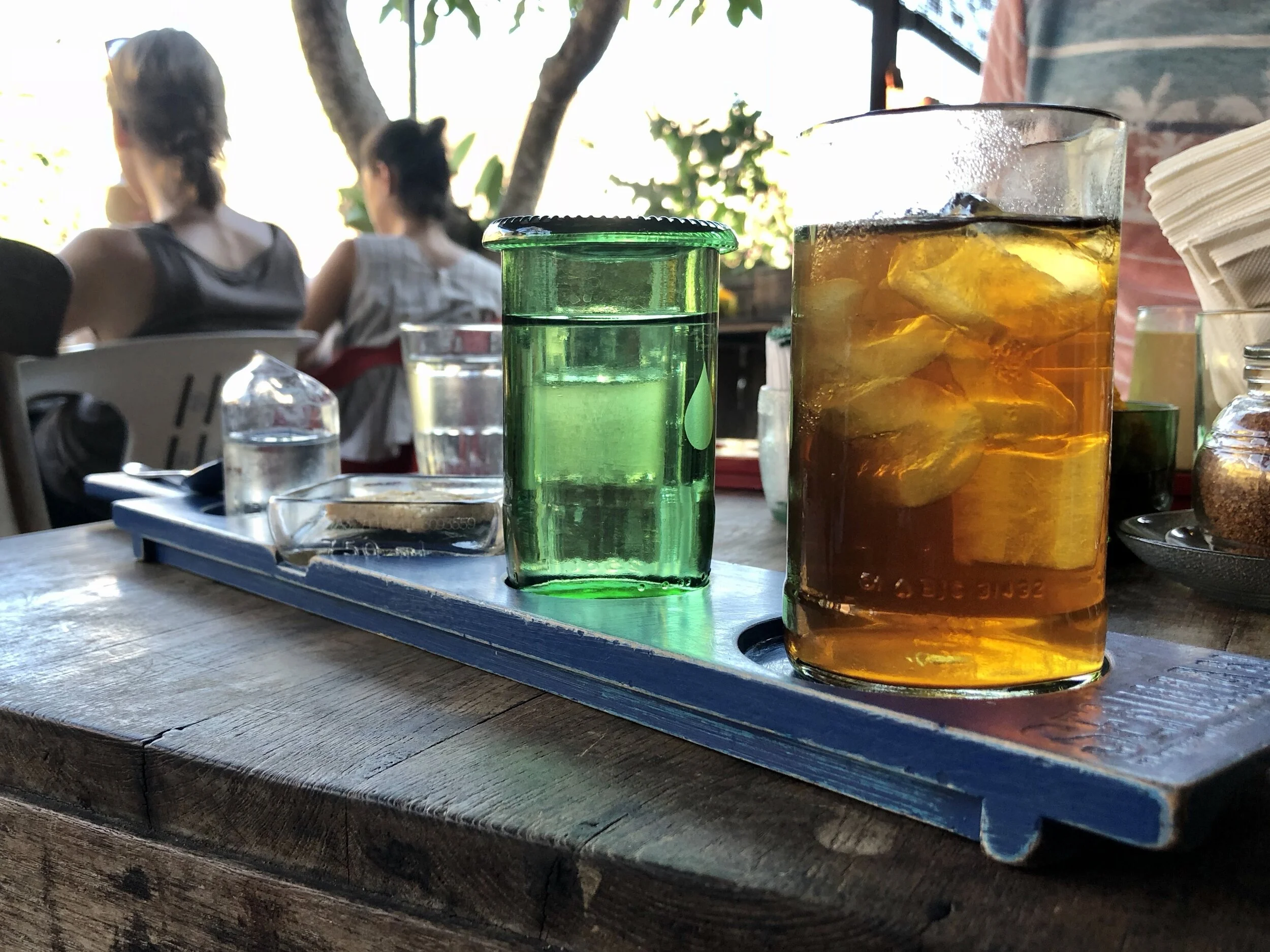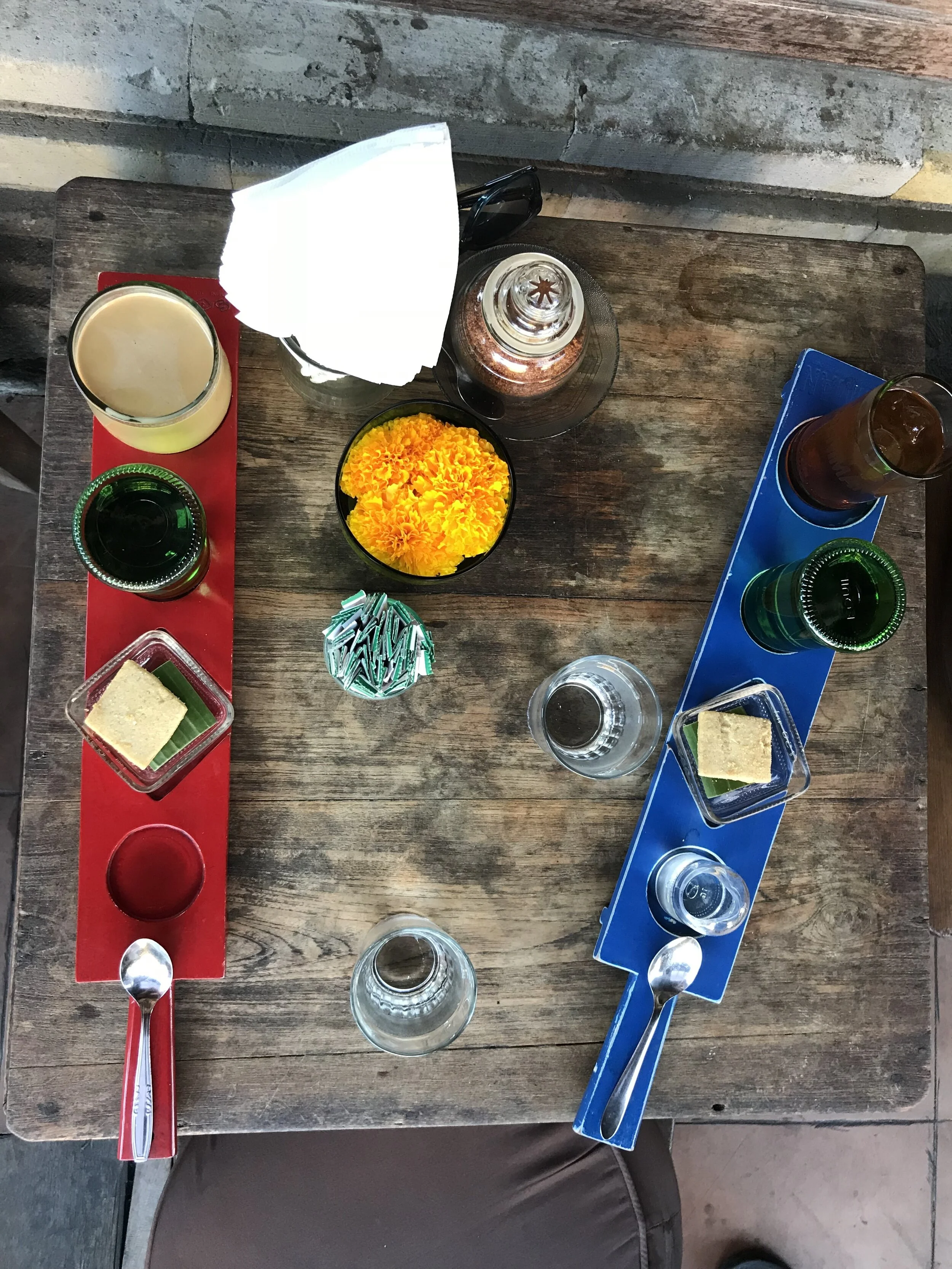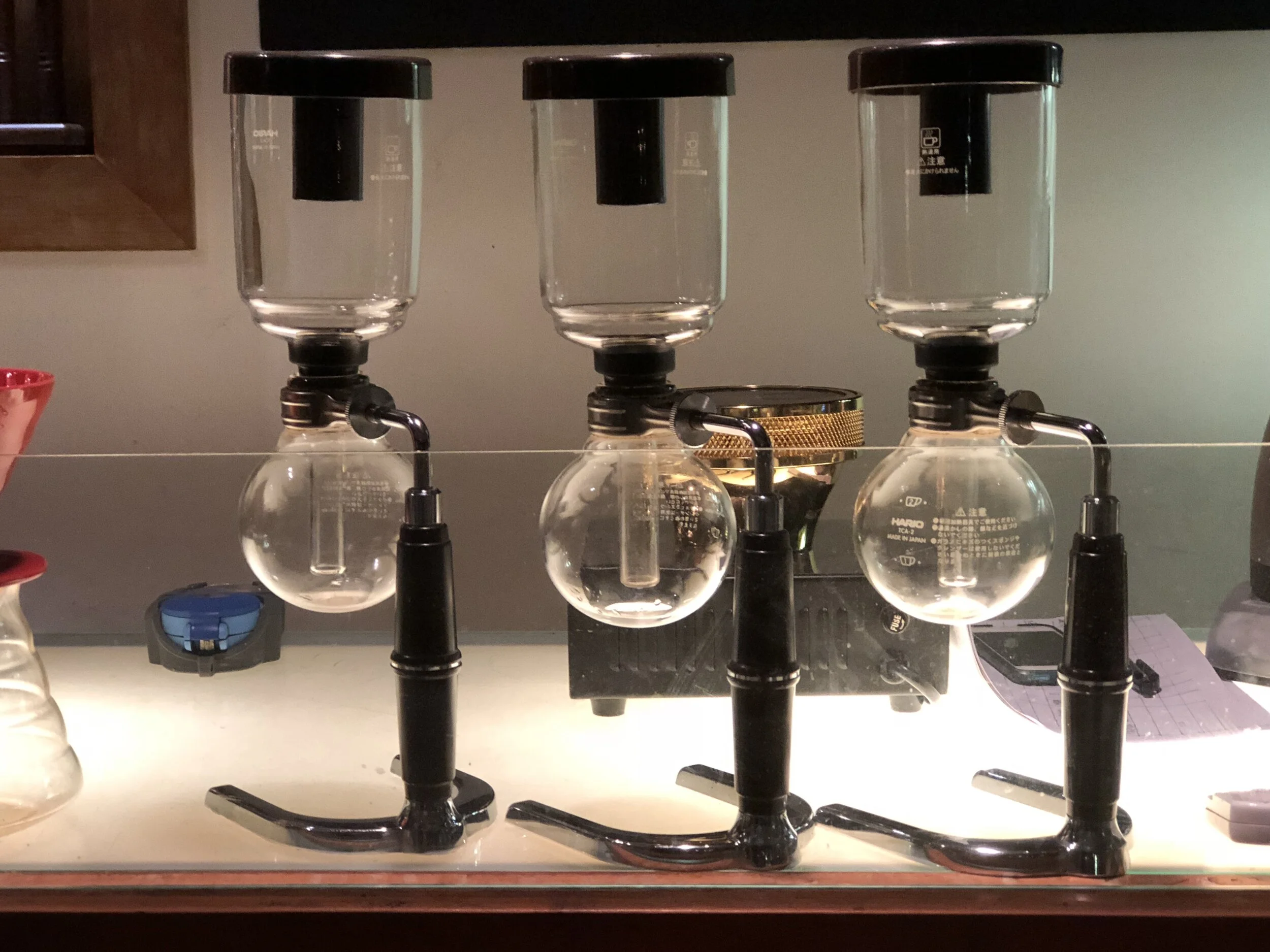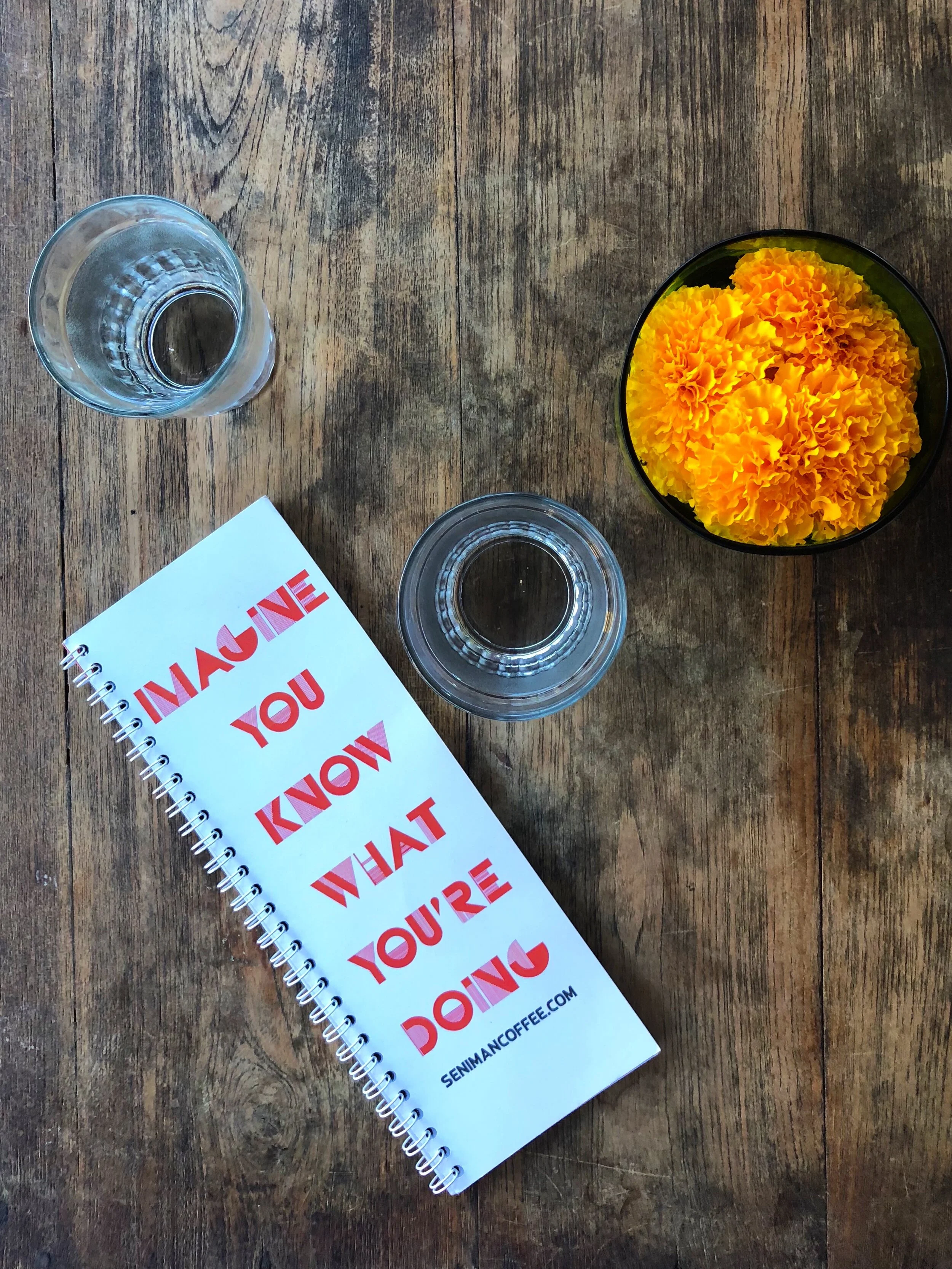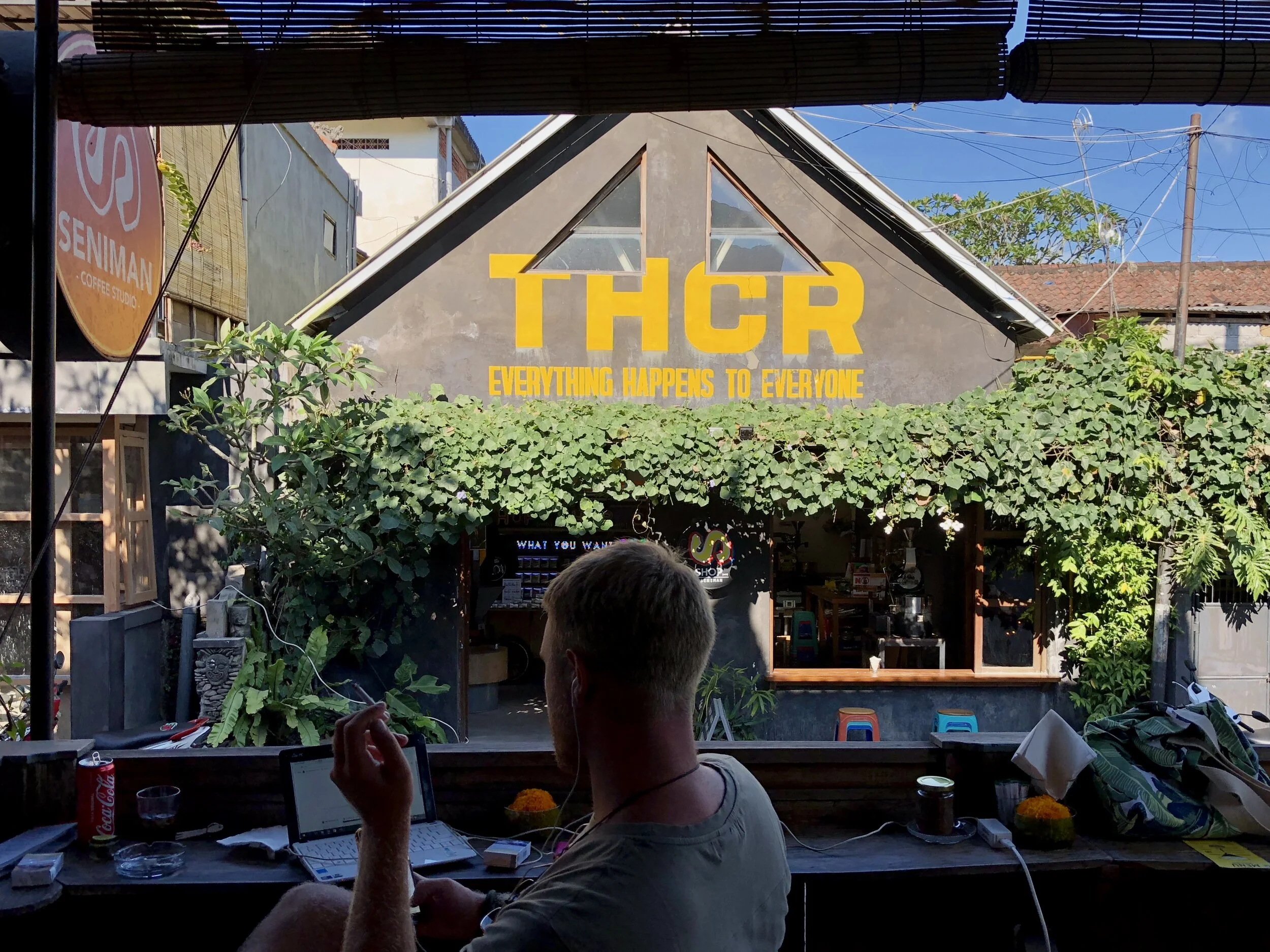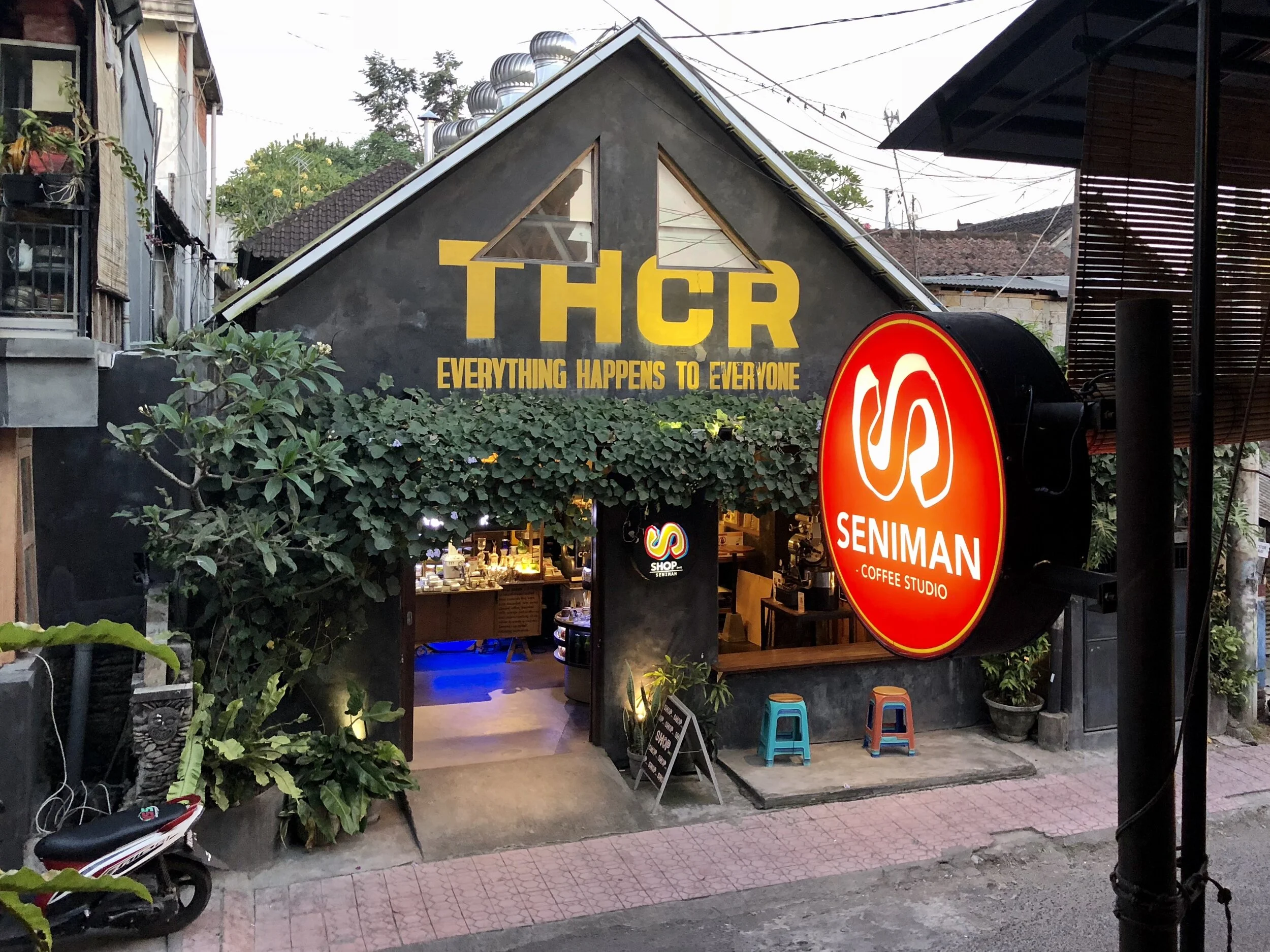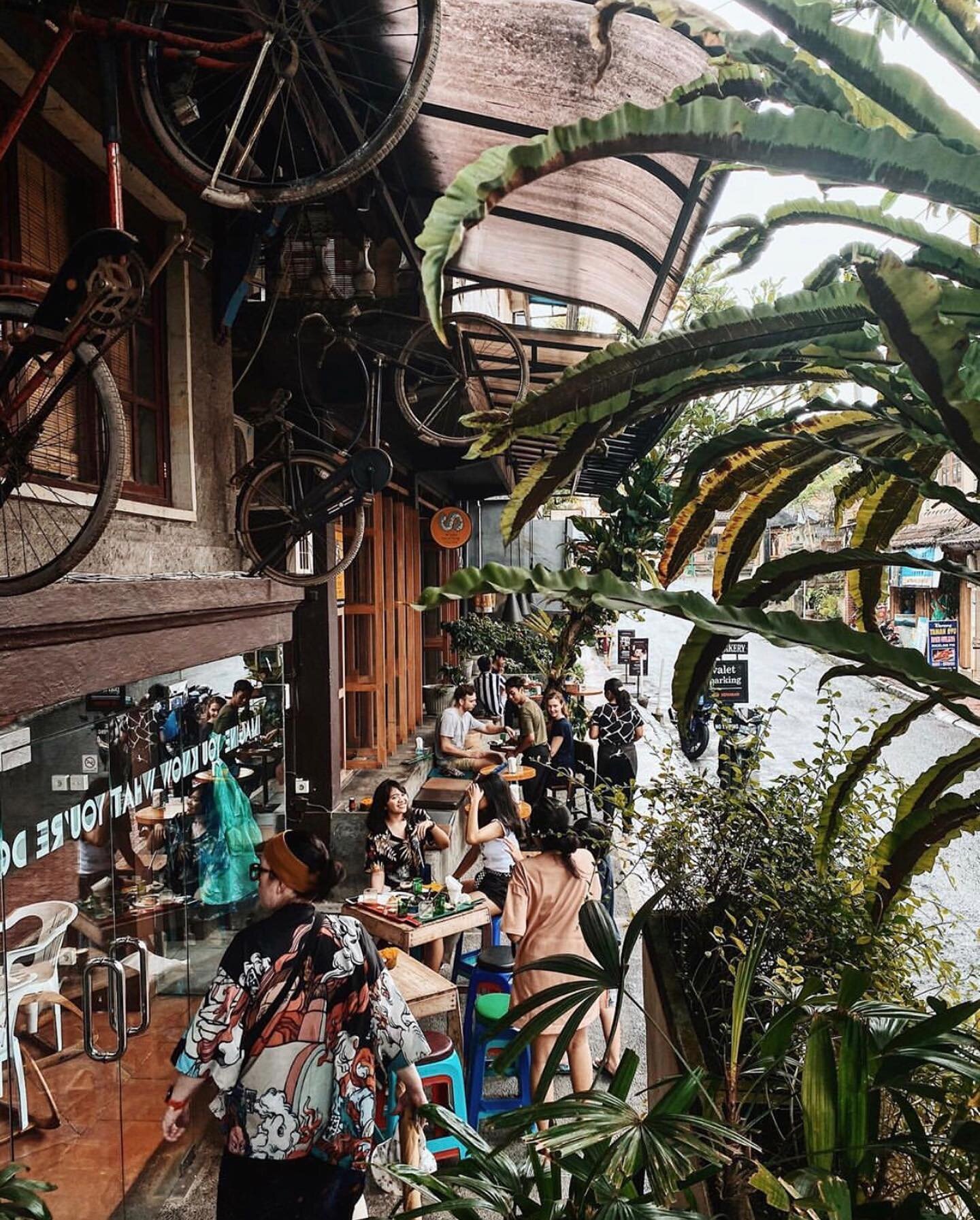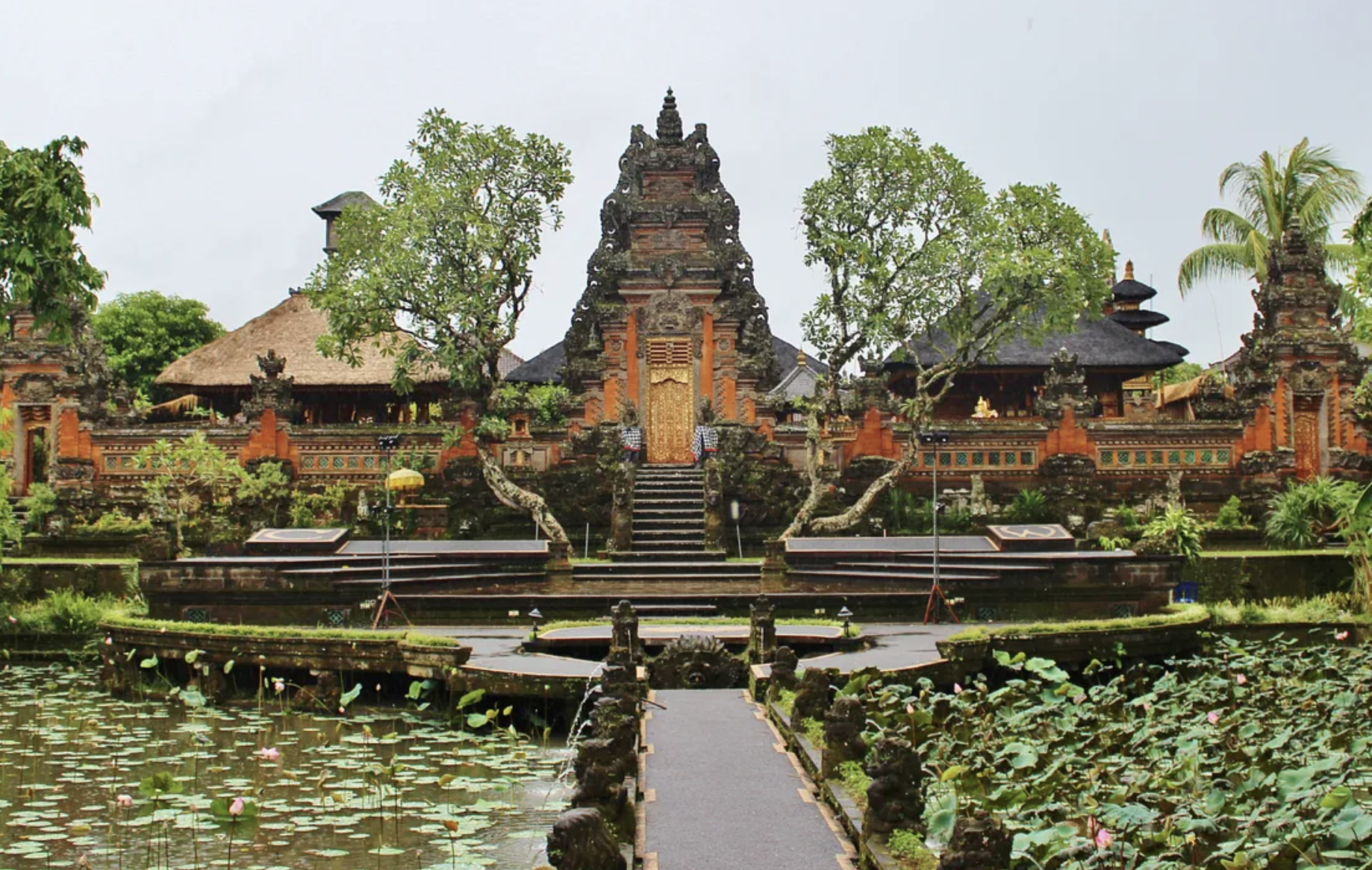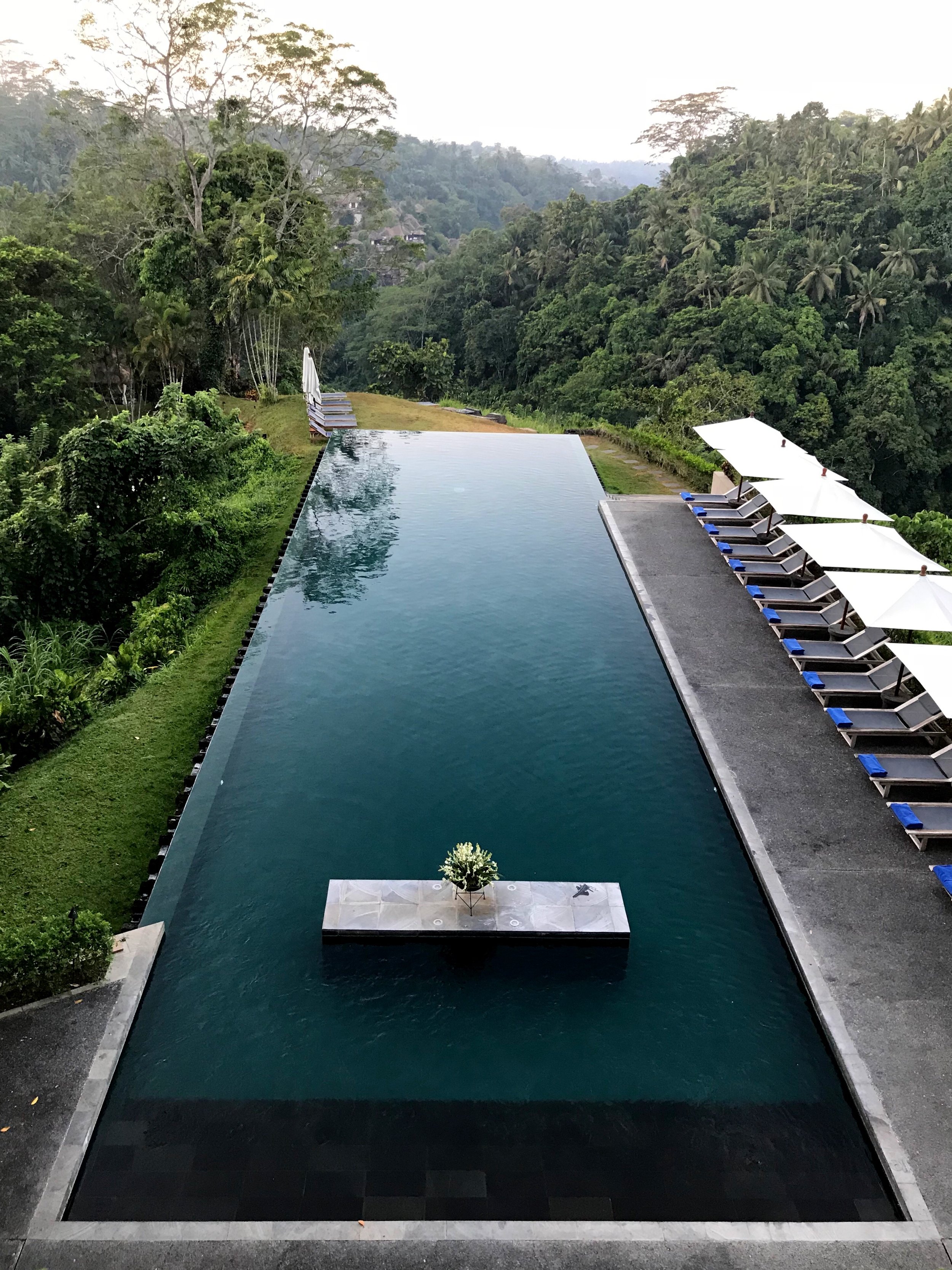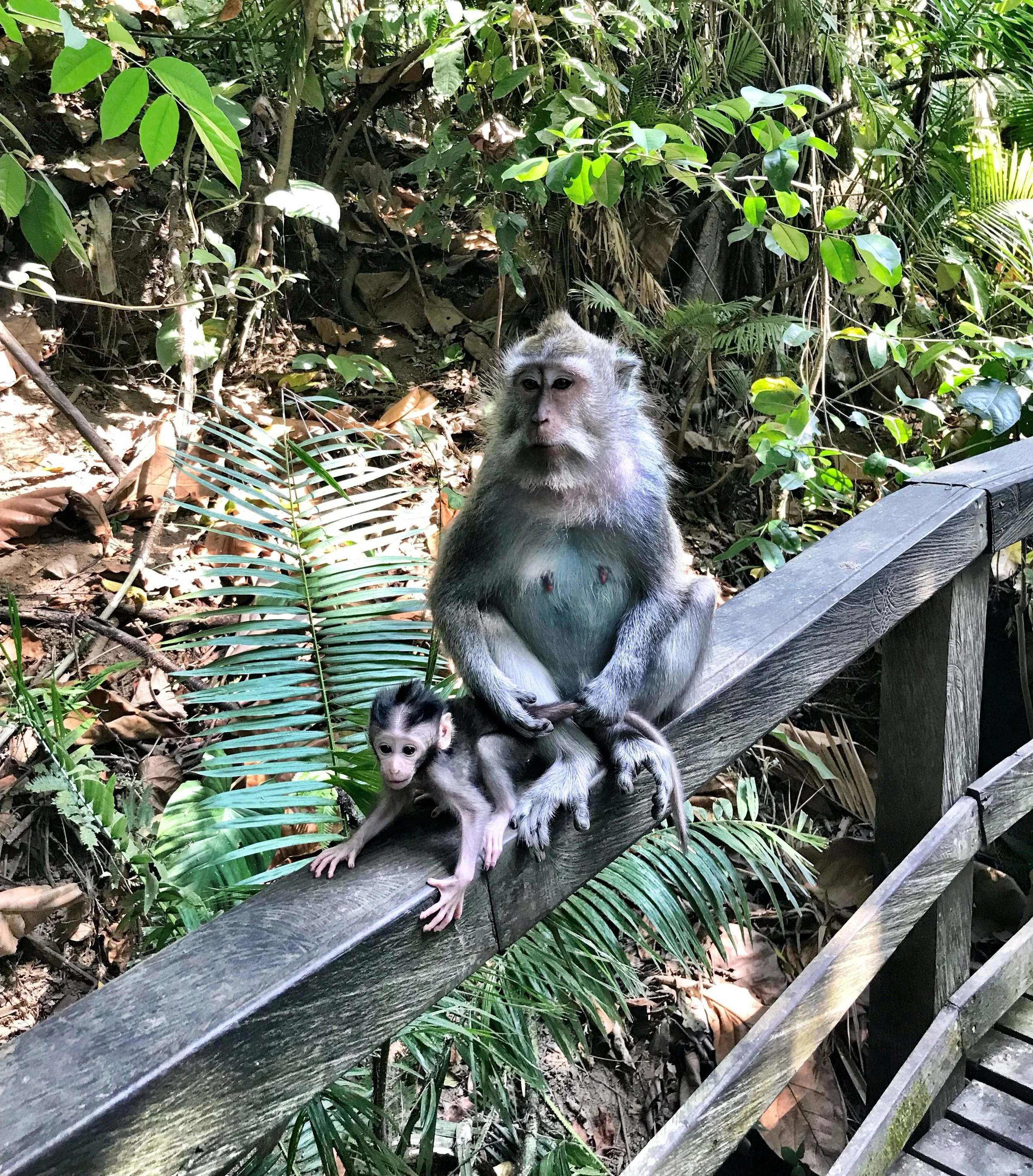This boutique hotel in Oaxaca has all the comforts of home — plus a spectacular rooftop terrace.
The open-air lobby of the hotel. The second floor is currently being built out.
Over time, as I do research on upcoming trips, I’ve come to learn what Wally and I appreciate the most when staying abroad. Or should I say what I like — and Wally ends up being pleasantly surprised by? In the end, a lot depends on location, budget, how you travel, what kind of comfort you’re looking for and, of course, style. I’ve got one main rule: Find a place within walking distance of sites and shops that delivers a well-rounded travel experience versus a mere hotel stay. In Oaxaca, that was Casa Antonieta.
Duke on the terrazo — our favorite spot at Casa Antonieta
Wally enjoying a glass of wine at the end of another fun day
Casa Antonieta: To Grandmother’s House We Go
When Wally and I arrived at check-in, we were warmly greeted by concierge Ana Jiménez. Our luggage was whisked away and taken to our room, and we were served refreshing glasses of rosemary- and lemon-infused water and freshly baked cookies.
As I took in the tranquil interior courtyard with its gracefully arched and symmetrical arcades, it reminded me of the ones we had seen in traditional Moroccan riads. Clearly the Spanish conquistadors brought this design to Mexico, influenced by the Moors, as the design is well-suited to hot weather, promoting natural ventilation and shade from harsh sunlight.
“ A large part of Casa Antonieta’s appeal is that it’s close to the action but far enough away from the bars to get a good night’s sleep.”
Casa Antonieta is located on a quiet stretch of Calle de Miguel Hidalgo, a short distance from the Zócalo, the historic center and public square of Oaxaca city. Tucked between the Fundación Alfredo Harp Helú and the Oaxaca Textile Museum, Casa Antonieta started life as a convent but became a mansion in the 1890s. Its name comes from Edificio María Antonieta, after the hotel’s founder Helwig George’s grandmother. A large part of its appeal to me was that it’s close enough to the action but far enough away from the bars and club scene to get a good night’s sleep.
The hotel is built around a central courtyard, much like a Moroccan riad.
In fact, Casa Antonieta is the perfect accommodation for exploring Oaxaca city’s historic quarter, restaurants, bars and shops. As you wander the cobblestone streets of Oaxaca Centro, you will undoubtedly find a variety of brightly colored Mexican Baroque, Neoclassical, Art Nouveau and more than a few neglected French and Spanish Colonial relics — one of which had a prominent banner announcing, “No Se Vende,” meaning the building is not for sale, in case you were wondering.
Our bedroom at Casa Antonieta — the woven rattan headboard evoked shelter and seclusion.
A Solid Foundation as a Convent
The boutique hotel was conceived by George, who worked with Mexico City architect Mariana Ruiz of At-te to refurbish and reimagine the property. Embracing its historic roots, the hotel has stayed true to the character of the original building, with the added bonus of modern amenities. George came up with the idea for Casa Antonieta in 2017, and the hotel opened its doors to welcome guests in April 2018. It stands on the site of the former 17th century Franciscan Convent of San Pablo. In 1911 it became a private single-story residence, and a short time after, a second floor was added.
George’s grandfather purchased the building in the ’70s, adding two additional floors and giving the building its name.
“When he passed away, my mother, aunt and uncle each inherited a floor,” George told us.
The hotel currently offers nine rooms, with plans to add seven more on the second floor. Ruiz collaborated with Mexican artisans, using local and natural materials where possible, such as the light-colored macuil wood and rattan. Walls are covered in an earthy hand-applied ecru-colored clay plaster, exuding a warm, rustic feel.
Room 15 was our home away from home.
The quaint kitchenette with its macuil wood
We stayed in room 15, which was located on the third floor. Our elegant room featured terrazzo floors, custom-built furniture and doors made with tropical hardwood indigenous to Southern Mexico. Lighting was designed by Taller Lu’um, a studio that collaborates with Mexican artisans. I also admired a wool rug made by Zapotec weavers in the nearby village of Teotitlán del Valle and conceived by Oaxaca-based studio Rrres.
The galley-style kitchen had open shelving with a potted succulent in a green glazed pot from Santa María Atzompa, and a few utilitarian barro rojo (red clay pottery) vessels from San Marcos Tlapazola. Both villages are close by and would make a good day trip.
The spa-like bathroom featured a floating countertop and shelf of macuil wood and a rain shower edged by river rock drainage.
Start your day on the terrace and end it there, as well, when the space becomes the bar Amá.
Golden hour on the rooftop is a good spot to take a new Tinder profile pic.
In the lobby, you can get lost in your thoughts, peruse the hotel’s collection of art and photography books, or simply enjoy sipping a latte from Muss.
Elsewhere, greenery further enhances the property’s tranquil atmosphere and creates a visually striking space.
Order breakfast at Muss…
…and enjoy it on the terrace.
Before heading out for the day, we enjoyed breakfast on the sunny rooftop terrace with views of the city and surrounding mountains. At night the rooftop transforms into Amá, which serves up expertly crafted cocktails and light bites. Wally and I recommend the roasted cauliflower steak with smoked pasilla chile rub. Plus, there’s a shop within the bar where you can purchase a selection of artisanal objects from the surrounding villages without having to leave the city.
Get a cold brew to go.
The popular coffeeshop that’s part of the hotel
the Buzz-worthy Muss Café
The hotel also contains a cool little café named Muss, which can be accessed from the lobby. The name of this “younger sibling” of Casa Antonieta comes from an adjective that means something like “tousled” or “organized mess” — which is exactly how we feel until we have our morning caffeine fix. Popular with locals and guests of the hotel alike, Muss offers great coffee and food. Their cold brew was one of the best that I had in the city. When I mentioned this to the charming concierge Javier Guzmán, he smiled and conspiratorially told me that they grind the beans with cacao nibs.
Casa Antonieta was a welcome refuge for us to return to after a full day of adventures within and outside of the city. The concierge team was always happy to share recommendations and arrange transportation for us when needed. If you’re searching for a great home base and unforgettable stay in Oaxaca Centro, look no further. –Duke
The unassuming façade of Casa Antonieta belies the lush interior.
Casa Antonieta
Miguel Hidalgo 911
Centro
68000 Oaxaca de Juárez
Oaxaca
Mexico

